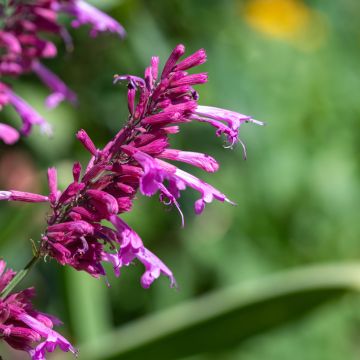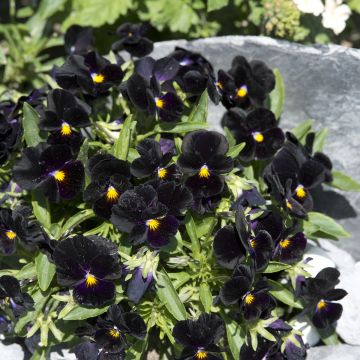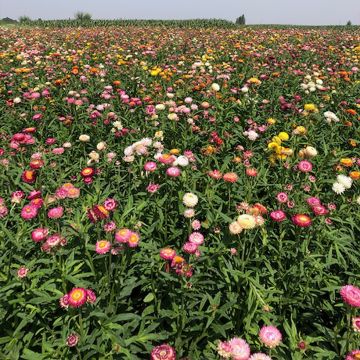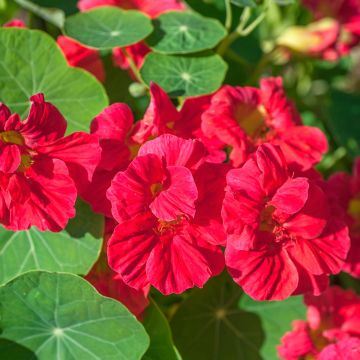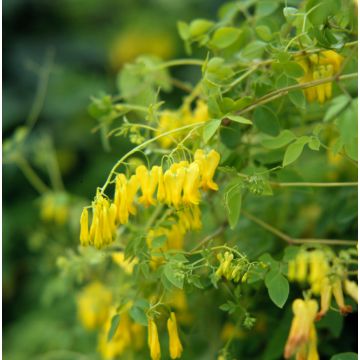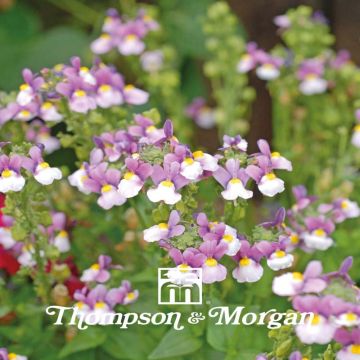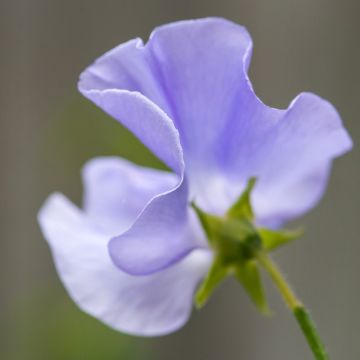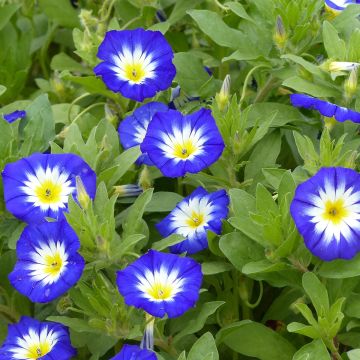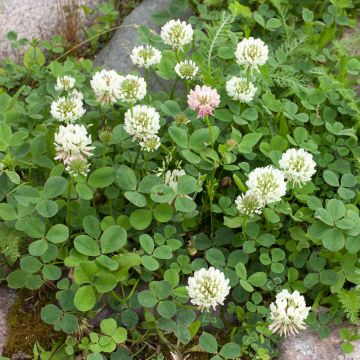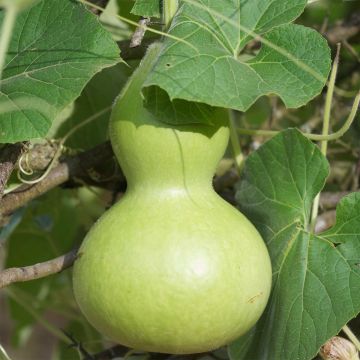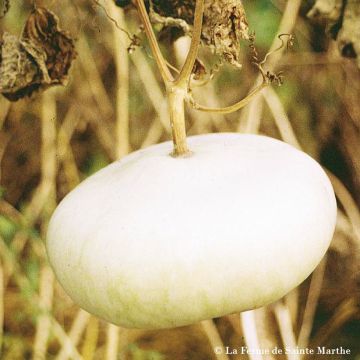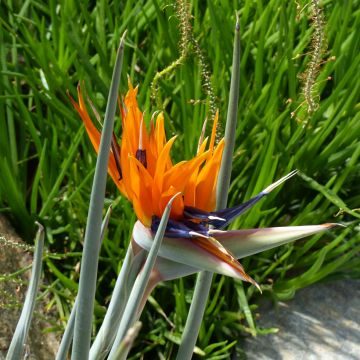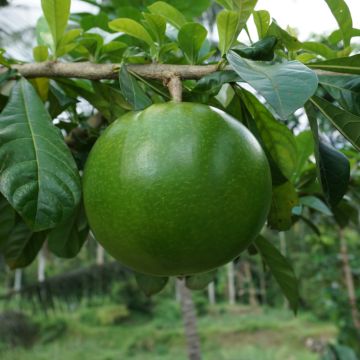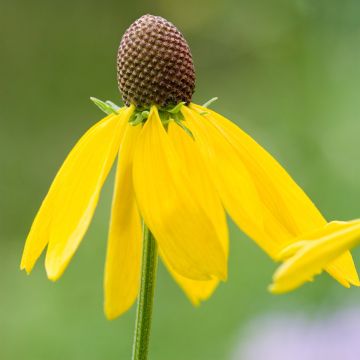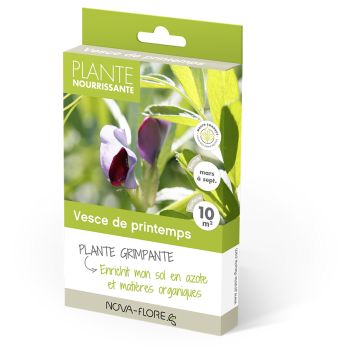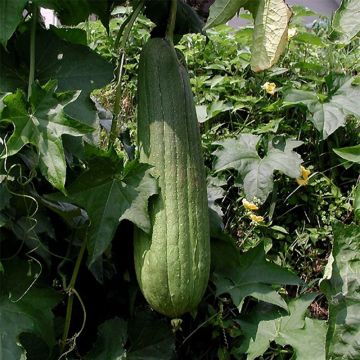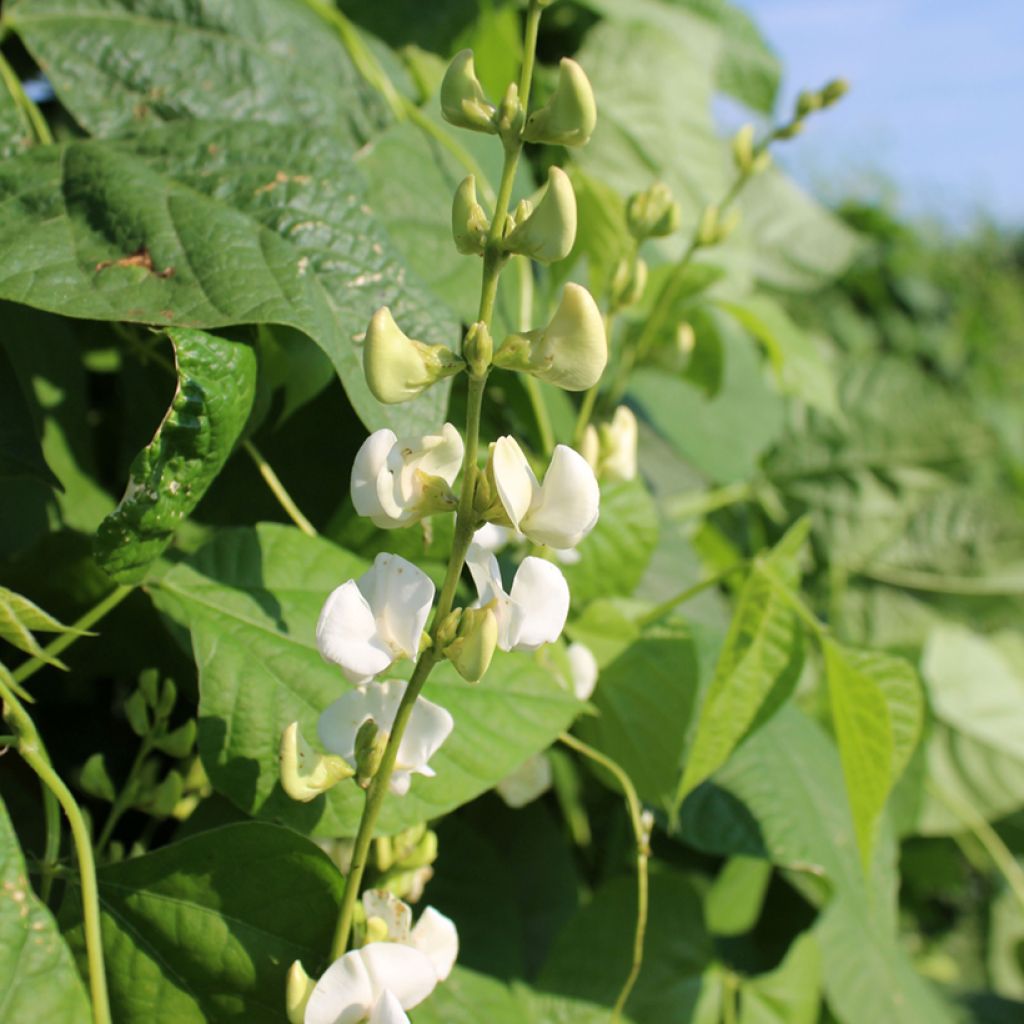

Dolichos Silver Moon - Lablab bean seeds
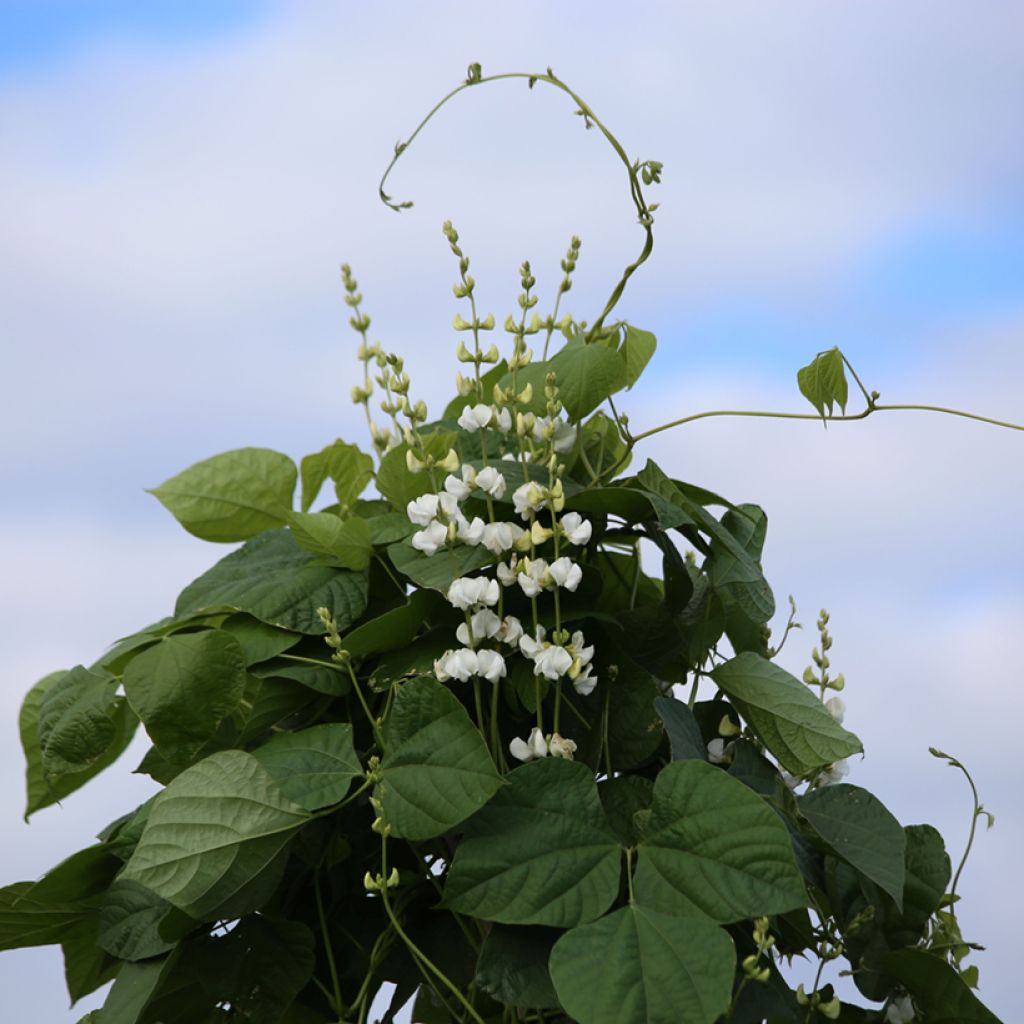

Dolichos Silver Moon - Lablab bean seeds
Dolichos Silver Moon - Lablab bean seeds
Dolichos lablab Silver Moon
Lablab bean, Hyacinth bean, Indian bean, Egyptian bean
This item cannot be shipped to the selected country
Dispatch by letter from €3.90
More information
Schedule delivery date,
and select date in basket
This plant carries a 6 months recovery warranty
More information
We guarantee the quality of our plants for a full growing cycle, and will replace at our expense any plant that fails to recover under normal climatic and planting conditions.
Seed-only orders are dispatched by sealed envelope. The delivery charge for seed-only orders is €3.90.
Does this plant fit my garden?
Set up your Plantfit profile →
Description
This Lablab or Dolichos lablab 'Silver Moon' is a compact variety of climbing bean native to Africa, featuring white flowers. It is grown as an annual plant due to its rapid growth and early flowering. This plant is distinguished by its attractive foliage tinged with burgundy red and its scented clusters of white pea flowers that appear in summer. In autumn, it produces nearly purple, shiny, and highly decorative pods. Egyptian dolichos are ideal for quickly covering a small wire fence, an arch, or a trellis, or for hiding an unwanted view. These sturdy and undemanding plants thrive in full sun in a warm, sheltered location, requiring minimal maintenance.
Dolichos lablab, also known as Lablab purpureus, Lablab niger, Dolique lablab, Lablab, Egyptian Dolique, or Indian Pea, is a frost-sensitive perennial climbing plant of the bean family, Fabaceae. Its origins are likely in Central Africa, but it has been cultivated for a long time, especially in East Africa and Asia as a vegetable plant and as a source of livestock fodder. In Europe, it is primarily the ornamental qualities of selected forms that interest gardeners. It is most often grown as an annual plant in the ground or in a pot, although it can survive brief frosts of around -7°C under a thick protective mulch. This small vine thrives in any well-drained, sufficiently deep soil, even if it is chalky and poor.
'Silver Moon' is a slightly smaller form than the typical species, with white flowers. The plant develops a significant root system, capable of penetrating deep into the soil to draw moisture. Its twining stems do not exceed 3 m and wrap themselves around the support provided (stakes, wire mesh, trellis, shrub). They bear large leaves divided into 3 strongly veined leaflets. The dark green upper surface is washed with purple and bronze, while the underside is purplish pink. Flowering begins approximately 5-6 weeks after sowing, as soon as the temperature exceeds 20°C, and lasts for almost 4 months. From July to September, numerous thin panicles of pea flowers appear at the axils of the leaves. This pleasantly scented flowering attracts many insects and butterflies. The flowers are followed by flat, short, and fairly wide, shiny, dark purple-violet pods with brownish highlights. They contain small dark seeds that can be harvested for resowing the following spring.
The 'Silver Moon' Egyptian dolichos is an original and highly decorative climbing plant that fits well in an ornamental garden, on a terrace or balcony in pots, or among vegetables in a curious gardener's vegetable garden. It is similar to sweet peas and morning glories, forming excellent combinations with these climbers. It is ideal for climbing on structures such as teepees, fences, huts, or trellises against a wall. Although not demanding in terms of water and food, Lablab requires long, hot summers to allow its seeds to fully ripen.
Report an error about the product description
Dolichos Silver Moon - Lablab bean seeds in pictures


Flowering
Foliage
Plant habit
Botanical data
Dolichos
lablab
Silver Moon
Fabaceae
Lablab bean, Hyacinth bean, Indian bean, Egyptian bean
Lablab purpureus, Lablab vulgaris, Lablab leucocarpos, Lablab niger, Dolichos lablab, Dolichos purpureus
Cultivar or hybrid
Other Flower seeds A to Z
Planting and care
Sowing:
For use in the garden as an annual plant, sow Dolichos Silver Moon from March to May.
Sow in trays filled with good quality soil sifted on the surface to bind the seed to its substrate. Before sowing, lightly press down the soil with a plank. Sow your seeds at a depth of 0.3 cm. Cover the seeds by sprinkling soil or vermiculite on top, lightly press down and water copiously with a fine rain. Place your tray in light, without direct sunlight, at a temperature of 20°C to 25°C. Lower the temperature at night to 20°C to create a beneficial alternation for germination. Seed germination will take 5 to 14 days at 20-25°C. Once the seedlings have appeared, you can lower the temperature to between 15 and 20°C.
When the plants are manageable, transplant them into 7.5 cm pots. Keep the soil moist but not excessive during growth. 15 days before their final placement, start acclimatising them gradually to a temperature of 15°C.
Culture:
By the end of May, the temperature in the garden will be warm enough to plant your young plants in well-prepared and loosened soil. Choose a location that is sunny, warm, and sheltered from strong winds. Space your plants 1m apart. You can also grow them in 25 cm diameter pots, which you can bring indoors in winter to protect them from frost in a cold greenhouse or a slightly heated conservatory.
Dolichos lablab does not require fertiliser in the ground. It is no more difficult to grow than beans in the vegetable garden. Once the plant is well established in the ground, it generally does not need watering, except in case of prolonged drought. This is particularly true if your climate allows it to be grown as a perennial in the ground. Its crown, placed in well-draining soil and protected by a thick mulch, can survive short frosts of around -7°C.
This plant has no specific enemies.
Sowing period
Intended location
This item has not been reviewed yet - be the first to leave a review about it.
Flower seeds
Haven't found what you were looking for?
Hardiness is the lowest winter temperature a plant can endure without suffering serious damage or even dying. However, hardiness is affected by location (a sheltered area, such as a patio), protection (winter cover) and soil type (hardiness is improved by well-drained soil).

Photo Sharing Terms & Conditions
In order to encourage gardeners to interact and share their experiences, Promesse de fleurs offers various media enabling content to be uploaded onto its Site - in particular via the ‘Photo sharing’ module.
The User agrees to refrain from:
- Posting any content that is illegal, prejudicial, insulting, racist, inciteful to hatred, revisionist, contrary to public decency, that infringes on privacy or on the privacy rights of third parties, in particular the publicity rights of persons and goods, intellectual property rights, or the right to privacy.
- Submitting content on behalf of a third party;
- Impersonate the identity of a third party and/or publish any personal information about a third party;
In general, the User undertakes to refrain from any unethical behaviour.
All Content (in particular text, comments, files, images, photos, videos, creative works, etc.), which may be subject to property or intellectual property rights, image or other private rights, shall remain the property of the User, subject to the limited rights granted by the terms of the licence granted by Promesse de fleurs as stated below. Users are at liberty to publish or not to publish such Content on the Site, notably via the ‘Photo Sharing’ facility, and accept that this Content shall be made public and freely accessible, notably on the Internet.
Users further acknowledge, undertake to have ,and guarantee that they hold all necessary rights and permissions to publish such material on the Site, in particular with regard to the legislation in force pertaining to any privacy, property, intellectual property, image, or contractual rights, or rights of any other nature. By publishing such Content on the Site, Users acknowledge accepting full liability as publishers of the Content within the meaning of the law, and grant Promesse de fleurs, free of charge, an inclusive, worldwide licence for the said Content for the entire duration of its publication, including all reproduction, representation, up/downloading, displaying, performing, transmission, and storage rights.
Users also grant permission for their name to be linked to the Content and accept that this link may not always be made available.
By engaging in posting material, Users consent to their Content becoming automatically accessible on the Internet, in particular on other sites and/or blogs and/or web pages of the Promesse de fleurs site, including in particular social pages and the Promesse de fleurs catalogue.
Users may secure the removal of entrusted content free of charge by issuing a simple request via our contact form.
The flowering period indicated on our website applies to countries and regions located in USDA zone 8 (France, the United Kingdom, Ireland, the Netherlands, etc.)
It will vary according to where you live:
- In zones 9 to 10 (Italy, Spain, Greece, etc.), flowering will occur about 2 to 4 weeks earlier.
- In zones 6 to 7 (Germany, Poland, Slovenia, and lower mountainous regions), flowering will be delayed by 2 to 3 weeks.
- In zone 5 (Central Europe, Scandinavia), blooming will be delayed by 3 to 5 weeks.
In temperate climates, pruning of spring-flowering shrubs (forsythia, spireas, etc.) should be done just after flowering.
Pruning of summer-flowering shrubs (Indian Lilac, Perovskia, etc.) can be done in winter or spring.
In cold regions as well as with frost-sensitive plants, avoid pruning too early when severe frosts may still occur.
The planting period indicated on our website applies to countries and regions located in USDA zone 8 (France, United Kingdom, Ireland, Netherlands).
It will vary according to where you live:
- In Mediterranean zones (Marseille, Madrid, Milan, etc.), autumn and winter are the best planting periods.
- In continental zones (Strasbourg, Munich, Vienna, etc.), delay planting by 2 to 3 weeks in spring and bring it forward by 2 to 4 weeks in autumn.
- In mountainous regions (the Alps, Pyrenees, Carpathians, etc.), it is best to plant in late spring (May-June) or late summer (August-September).
The harvesting period indicated on our website applies to countries and regions in USDA zone 8 (France, England, Ireland, the Netherlands).
In colder areas (Scandinavia, Poland, Austria...) fruit and vegetable harvests are likely to be delayed by 3-4 weeks.
In warmer areas (Italy, Spain, Greece, etc.), harvesting will probably take place earlier, depending on weather conditions.
The sowing periods indicated on our website apply to countries and regions within USDA Zone 8 (France, UK, Ireland, Netherlands).
In colder areas (Scandinavia, Poland, Austria...), delay any outdoor sowing by 3-4 weeks, or sow under glass.
In warmer climes (Italy, Spain, Greece, etc.), bring outdoor sowing forward by a few weeks.

































